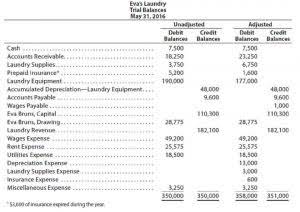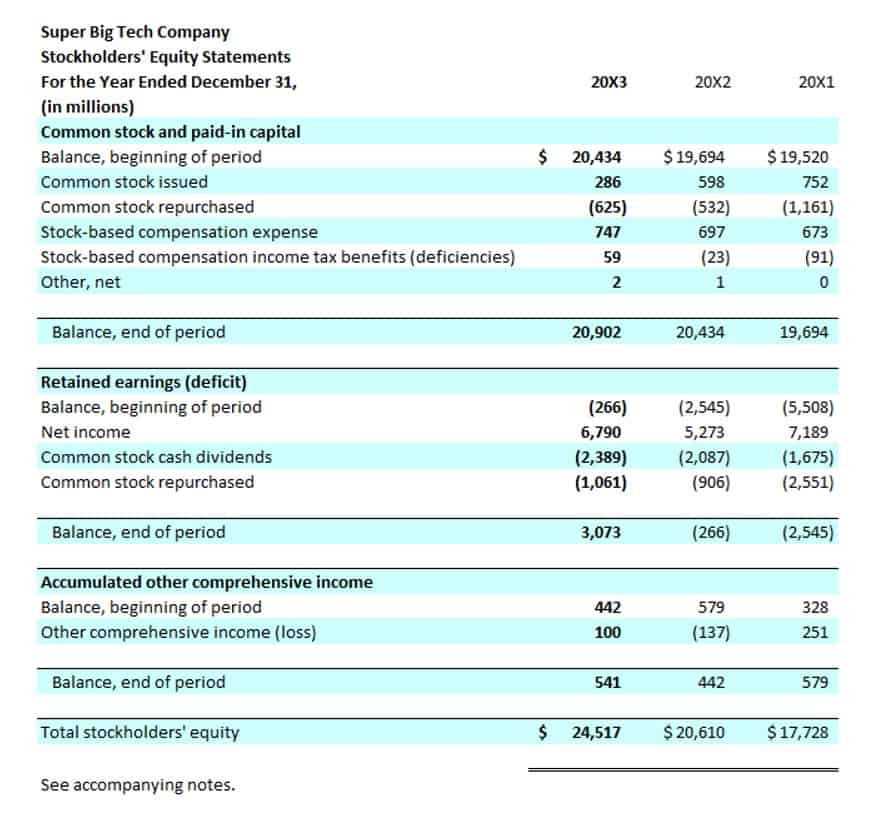QuickBooks Retained Earnings Incorrect: Profit and Loss Report

Under accounting standards like GAAP or IFRS, companies must periodically assess asset values and recognize impairments when necessary. These adjustments, though non-cash, can materially affect the retained earnings balance. Negative retained earnings arise from various financial and operational challenges. A primary cause is sustained net losses, which occur when a company consistently spends more than it earns. High operating costs, declining sales, or ineffective cost management contribute to this situation. For instance, a company in a competitive industry may struggle to maintain market share, leading to reduced revenue and pressure on margins.
- Companies might also consider selling non-core or underperforming assets to generate cash and strengthen retained earnings.
- This thread is always available for any additional queries you have when managing transactions in your account.
- It’s possible the accumulated deficit results from too big a dividend and not retaining enough earnings.
- Investors analyzing a company with negative retained earnings must approach their review with care.
- These individuals can provide valuable insights and guidance on how to get the company back on track.
Negative retained earnings and your business

By increasing shareholder equity, retained earnings can improve a company’s debt-to-equity ratio, often scrutinized by investors and creditors to assess financial leverage and risk. A strong equity position, bolstered by consistent profitability and prudent retention of earnings, can lead to favorable borrowing terms and increased investor confidence. This dynamic is reflected in the return on equity (ROE) ratio, a key performance indicator measuring a company’s ability to generate profits from shareholder negative retained earnings investments. A higher ROE often signals efficient management and profitable use of equity capital.

Learn the art of investing in 30 minutes
In contrast, when a company suffers a net loss or pays dividends, the retained earnings account is debited, reducing the balance. At the beginning of its current year, Elfin has a retained earnings balance of $300,000. During its current year, an unexpected decline in economic conditions results in a sharp drop in its sales, triggering a loss of $100,000. At this point, the company still has positive retained earnings of $200,000.
Impact of Dividends on Retained Earnings
Retained earnings are also known as accumulated earnings, earned surplus, undistributed profits, or retained income. It can go by other names, such as earned surplus, but whatever you call payroll it, understanding retained earnings is crucial to running a successful business. The SmartBiz® Small Business Blog and other related communications from SmartBiz Loans® are intended to provide general information on relevant topics for managing small businesses.
Business Operations

In this article, you will gain more insights into how to view, adjust, and examine the Retained Earnings in QuickBooks. It is crucial to learn about this account that automatically stores a company’s profits and losses. The net income is calculated once all the invoices are sent and bills are paid. To explain it in easier terms, it’s considered as a part of equity on the balance sheet, showing cumulative net income minus dividends.

Adjustments to retained earnings can occur due to changes in accounting policies or corrections of prior period errors, as guided by GAAP or IFRS. These adjustments are recorded directly in https://www.bookstime.com/ retained earnings to provide an accurate reflection of a company’s financial position. For example, correcting a revenue recognition error from a previous year would adjust retained earnings, ensuring compliance and enhancing transparency.
Managing Negative Retained Earnings in Corporate Finance
Accounting adjustments and restatements can significantly impact retained earnings. Errors in financial statements, once corrected, may reveal previously unrecognized losses. For instance, a multinational corporation that restates earnings due to revenue recognition errors might experience a sharp drop in retained earnings. Negative retained earnings often result from sustained net losses over multiple fiscal periods. Companies that consistently spend more than they earn, whether from high operational costs or declining sales, can quickly find themselves in a deficit. For example, a tech startup investing heavily in research and development without immediate revenue may experience this.
- In general, though, retained earnings are expected to have a credit balance, reflecting the company’s accumulated profits over time.
- In the long term, negative retained earnings may indicate that a company is not financially viable and may lead to its eventual failure.
- If anyone else has this problem I found a box to x on scde m-1 that allowed me to zero out the retained earnings with no impact to k-1 which is what I wanted.
- Investors should consider the broader economic environment and industry trends when analyzing a company with negative retained earnings.
- Still, they were able to show positive shareholders’ equity through the strength of selling shares of the company to create capital to use to fund the business.
- Positive retained earnings signify financial stability and the ability to reinvest in the company’s growth.
- Negative retained earnings impact a company’s ability to pay out dividends.
- In QuickBooks Online (QBO), retained earnings is an Equity account that represents the company’s profits to be reinvested or used later.
- This can involve expanding into new markets, launching new products or services, or increasing marketing efforts to bring in more business.
- A detailed financial audit is essential to identify the root causes of the deficit.
Instead, they represent a company’s accumulated losses that profits have not offset. While positive retained earnings are ideal, your retained earnings can still be harmful, depending on whether or not the company has generated more profits than it has paid out as dividends. Retained earnings can decrease due to various factors such as payment of dividends, share buybacks, losses incurred in the current period, and adjustments to accounting policies. This negative figure signifies that the company has accumulated more losses than profits, highlighting potential financial distress and a lack of profitability. Retained earnings represent the cumulative net profits or losses of a company that are reinvested back into the business rather than distributed to shareholders as dividends.
Retained Earnings Versus Dividends
All this spelled trouble for Sears; its shrinking margins and declining revenue could not sustain itself. For me, investing in Snapchat at this point in its development doesn’t equal a company I would buy; they have too many losses and haven’t proven they can produce positive earnings. Last week we discussed the statement of retained earnings, which is made up contents of this statement and retained earnings. This reduction happens because dividends are considered a distribution of profits that no longer remain with the company. Discover the key financial, operational, and strategic traits that make a company an ideal Leveraged Buyout (LBO) candidate in this comprehensive guide. Negative accumulated earnings can pose significant challenges for companies, affecting their financial stability and growth prospects.
